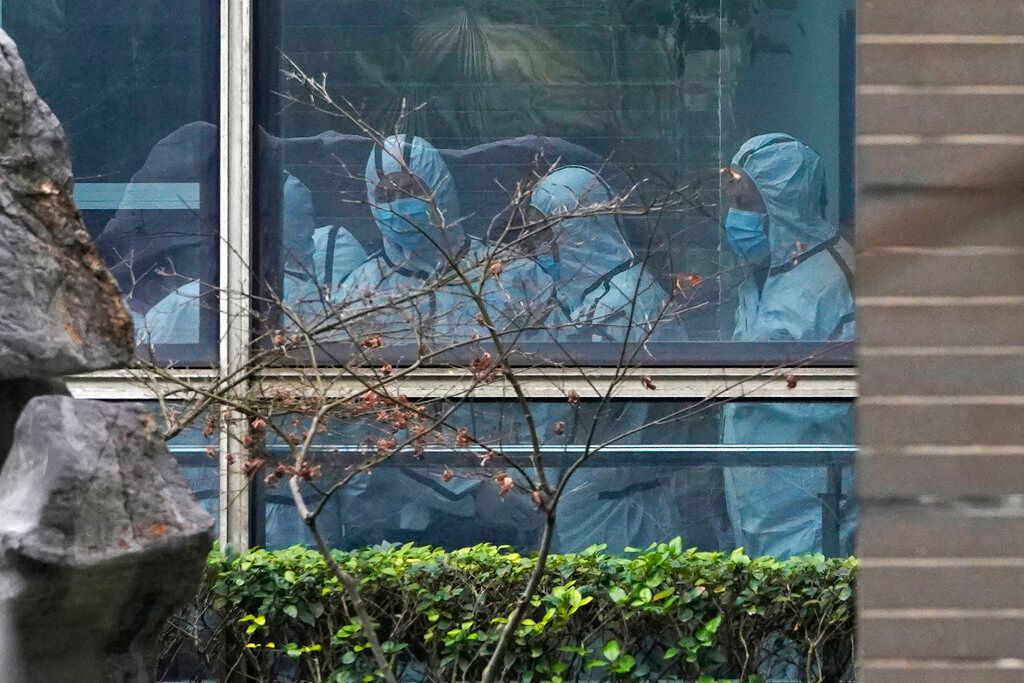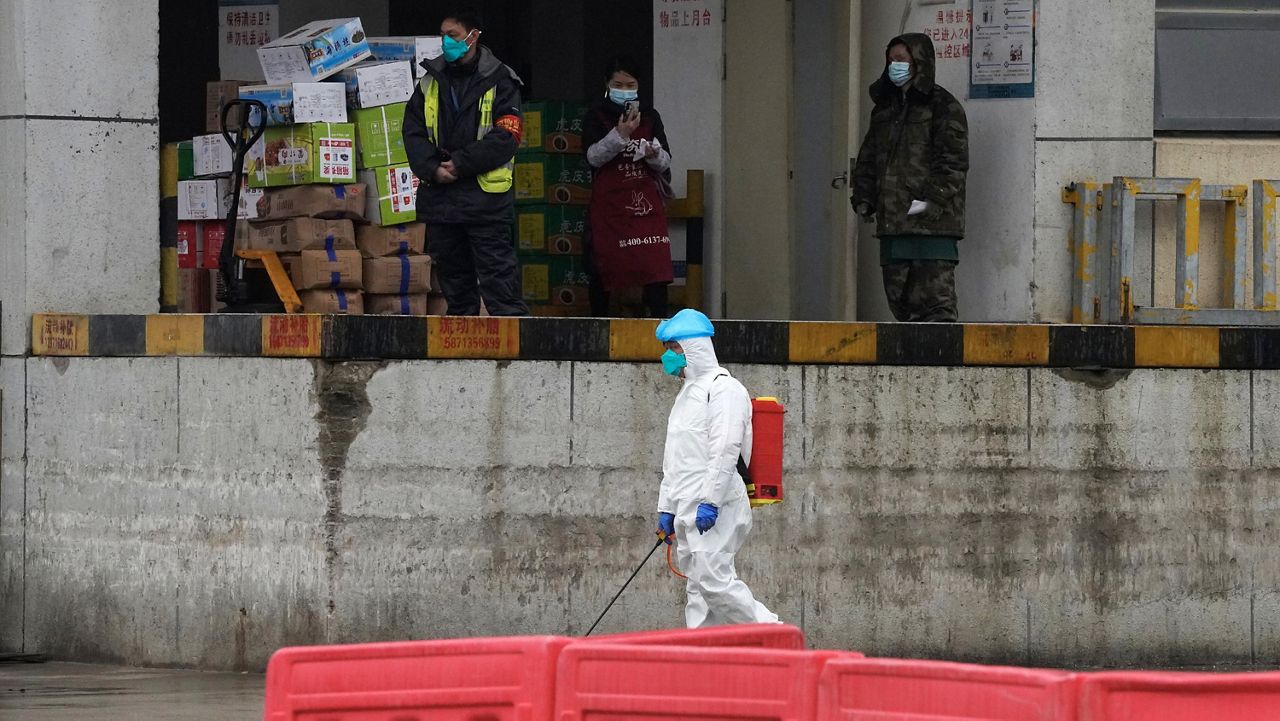DURHAM, N.C. — Researchers with the World Health Organization, like detectives in an epidemiological mystery, are still working to track down exactly where the coronavirus came from and how it jumped from animals to humans.
The coronavirus, called COVID-19 or SARS-CoV2, began spreading in Wuhan, in central China, late in 2019.
“What we can say for certain right now, scientifically, is the ancestral virus of SARS-CoV2 comes from bats,” Duke Professor Linfa Wang said.
That middle step, between infected bats and how it got into humans, is still an open question for researchers.
Many researchers suspect the virus began moving to humans in a market in the city that sold live animals.
“There was massive transmission going in that market for sure,” Wang said.
Wang is an emerging infectious diseases researcher at the Duke-NUS Medical School in Singapore. He’s been researching where COVID-19 came from and spoke to reporters recently with two other Duke professors about this mystery.
He said there are three possible ways the virus could have gotten to Wuhan before the outbreak: by a live animal in the market, by a mutation in the virus that happened in humans, or the virus traveled to Wuhan on frozen food.
“Frozen food is a possibility, but I rank that as number three,” Wang said.
Wang said an experiment showed that the virus, spread on meat, could be frozen for weeks, and the virus would survive after it’s thawed out.

Investigators with the WHO continue their work to figure out where the coronavirus pandemic came from. The first known case of the virus was in a person who started showing symptoms on Dec. 8, 2019, a WHO investigator told the journal Nature.
The researchers think the link between bats and humans was a wild animal sold at the Huanan Seafood Market in Wuhan, China, according to Nature. The investigators are looking at the farms that provided live animals to the market and where frozen food there came from.
Scientists may never be able to figure out the specifics on the origins of COVID-19, but they have been able to do it before.
Wang told the story of tracking down the origins of another virus outbreak that came from bats, this time the Nipah virus in Malaysia. They were able to track down not just which village the virus came from, but which farm.
“In those days, the Malaysian government allowed the pig farms to do fruit tree farm, so you had the fruit tree basically over the pig pen to provide the shelter for the pig underneath the tree,” Wang said. “Sounds like a very creative and productive idea.”
But, he said, it turned out to be a very risky idea. The bats were in the trees eating fruit above the pigs, then dropping half-eaten fruit down into the pen where the pigs would eat it. That’s how the virus got from bats to pigs, and then the virus moved from pigs to humans.
Researchers say farming practices and the growth of big cities has led to more viral outbreaks.
“It’s important not to think of this being some exceptional event that happens just once and won’t happen again for 100 years. Two or three major viruses spill into the human population each year,” said Stuart Pimm, a professor of conservation ecology at Duke University.
He pointed to another major pandemic: HIV/AIDS, which has killed at least 10 million people worldwide.
“In all cases, it’s a consequence of our human actions imposing upon the natural world. In the case of HIV, it was cutting down forests in west Africa. In this case it’s by contact with bats or some other related species,” Pimm said.
He is part of a team that found reducing the wildlife trade and deforestation could help prevent pandemics in the future.
“It’s clear there’s a lot of very cost-effective things we can do to prevent that kind of abuse of the world’s natural ecosystems. Limiting wildlife trade, limiting the number of species we use as bushmeat,” he said.
But people have been eating wild animals for hundreds of millions of years, Dr. Gregory Gray said. “It’s not simply our contact with wildlife. I think there have been a number of other things that have happened.”
Gray, an infectious disease specialist, is a professor at Duke-NUS Medical School in Singapore and Duke Kunshan University in China.
He said big cities with dense populations close to animals can lead to more virus outbreaks.
“We have gone to industrialized farming throughout the world. It’s good that we do because we need industrialized farming to produce enough protein to feed the human population,” he said.
“That industrialized farming comes with its costs. One of the costs is a virus that doesn’t kill those animals can get into those dense populations and churn – make many copies of itself and periodically mutate,” Gray said.
While the coronavirus pandemic has been traced as far back as bats, it’s still not clear how it went from a bat to the first human infection. But it appears that happened somewhere in the food system.
“We’re seeing the movement of people, the movement of animals and the movement of animal products – food – at a rate we’ve never seen before. If a person or an animal or a food product harbors a novel virus, that can be moved rather quickly halfway around the world and cause a threat to a different population,” Gray said.
All three scientists said the world needs to do a better job monitoring for possible viruses and preventing outbreak.
“We have a whack-a-mole policy right now. We wait for a pathogen to cause a lot of morbidity, and then we respond. We have to figure out a better way to predict these and mitigate them before they cause a lot of harm,” Gray said.



